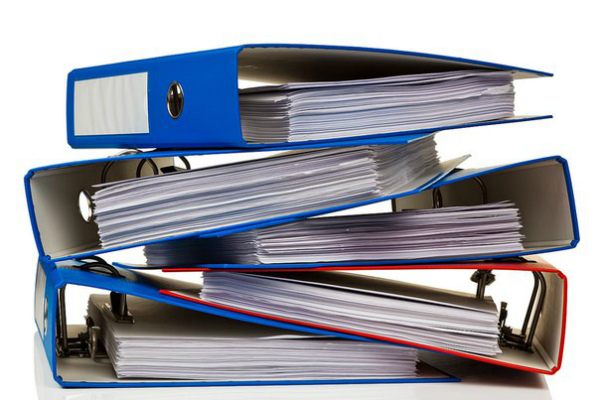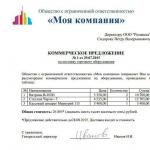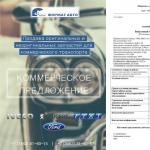Meeting minutes - sample and design
» How the meeting minutes are made
How the minutes of the meeting are drawn up
Meetings are held in most organizations regardless of the form of ownership. On them, employees and managers exchange information on current issues, make operational decisions. In order for such an event to be held with maximum efficiency, minutes of the meeting are kept. This document has both an informational and administrative function: it records information about the issues raised and the decisions made.
Recording the progress of the meeting is the responsibility of the secretary of the head of the organization. This function can be performed by another employee.
Prior to the start of the meeting, the secretary is given a list of invitees and an indicative list of questions. Participants submit abstracts. This helps to prepare a document template to speed up the work on compiling the final version of the protocol. If there are many participants, then it is advisable to have a registration sheet, where the full name will be indicated. persons who have appeared. After the start of the meeting, the secretary will fix the final list of those present.
Information is recorded by the secretary of the meeting during the event. In order to improve the accuracy of logging, dictaphone recordings are used. All words are recorded on a digital medium, and then reproduced during the final execution of the document.
If a large meeting is held with a large number of participants, then 2 secretaries lead the puncture. The work of two specialists at once on the protocol will help speed up the process if the meeting is delayed.

Separate remarks, remarks, comments, discussions of issues not related to the topics of the meetings are not reflected in the document. The protocol fixes the general meaning of reports, questions and proposals. The decisions and instructions that the head gives to individual performers are accurately recorded.
Note! Reports and questions do not need to be written word for word.
If the manager needs accurate information, he will require a report signed by the responsible employee. At the meetings, the state of affairs as a whole is negotiated, so there is no need for a detailed record. As a result, the protocol summarizes the course of the meeting: the topics discussed, the issues raised and the decisions made.
In some cases, the leaders of the organization require exactly the verbatim fixation of each phrase. This is typical for meetings in modern companies, where a large number of operational issues are resolved at such events.
Registration
Often you can find references to the fact that protocols should be kept on special forms. This happens when such meetings take place in government departments, for example, in municipal governments.
In ordinary organizations, special forms for logging are rarely introduced. The exception is special types of meetings, for example, the work of the board of directors of a joint-stock company.

The minutes of the meeting must contain the following information:
- Mandatory details:
- date and number;
- name of company;
- type of document indicating the event;
- place of the meeting.
Also, each sheet is numbered so that you can accurately track the progress of the meeting;
- List of attendees and their roles. It is necessary to indicate the full name. and the position of the specialist who takes the minutes, the head, the moderator of the meeting, and other participants in the meeting. Instead, a turnout sheet can be used, where the arriving workers sign;
- If there were persons representing other organizations at the event, then they are indicated with the note “Invited”;
- The main part of the protocol consists of 3 consecutive blocks:
- Listened. Full name is indicated. and the position of the speaker, the main topic of the speech, a summary of the details of the speech;
- Made a speech. Full name is fixed. and the position of the person who asked questions or commented on the substance of the speech;
- Decided. Based on the result of the report, the leader gives instructions or imposes a resolution. The decision is recorded by the secretary in detail, as it is binding on employees. The deadlines for completing tasks are indicated.
Note! If the decision is voted on, then the number of votes “for”, “against” and abstentions should be recorded without indicating the names.
- At the end of the protocol, the signatures of the secretary and the head of the meeting are put. Printing is not required.
The final version of the document is prepared some time after the meeting. This may take several hours or several days, depending on the amount of information. Then it is submitted for signature to the head who led the event.

After that, the protocol is sent to interested parties, or official extracts are made from it with instructions for specific performers.
Minutes of the operational meeting
The operational meeting has several features:
- A clear frequency of holding (for example, once a week at a certain time);
- Stable composition of participants;
- Almost unchanged topics and questions;
- Short duration.
These characteristics leave their mark on the preparation of the minutes of the operational meeting. The secretary knows in advance the algorithm of work, the issues that will be discussed. This allows you to speed up the work on the final document, to form most of it in advance.
The minutes of the meeting are prepared quickly so that the document is immediately submitted for signature to the head.
Storage
When deciding on the storage of minutes, the secretary should study the internal documents of the organization.

Thus, the minutes of a meeting of the board of directors or a general meeting of shareholders of a joint-stock company must be kept permanently. Documents are located at the location of the permanent body of the organization. This procedure is established in the resolution of the Federal Commission for the Securities Market No. 03-33/ps of 16.07.2003, which contains norms governing the rules and terms of storage of certain documents in joint-stock companies.
Usually the minutes of various meetings are kept for 3 or 5 years, after which they are archived and destroyed in accordance with the instructions.
Meeting minutes are not an element of unnecessary bureaucracy. It helps the participants of the meeting not to forget the agenda and complete the instructions of the head on time. Today, there are electronic resources for the rapid preparation and distribution of such documents. Therefore, the secretary can quickly and conveniently present the finished version of the protocol to all interested parties.
.




